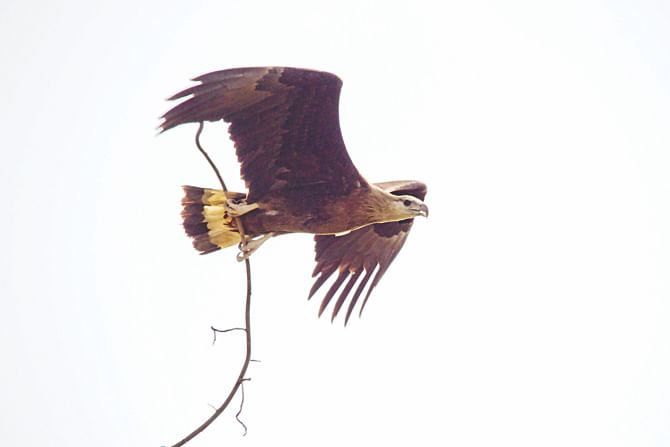Birds At Risk
Birds At Risk

Some weeks ago I wrote about famous birds which became extinct including the dodo and the passenger pigeon. Extinction is forever. In the past, when a species approached extinction, we were unprepared to save it. But what if we know which birds (or other animals) face the risk of imminent extinction? Then perhaps we could do something about it.
Fifty years ago, the IUCN (International Union for Conserving Nature) first published a red-coloured book on threatened species. Since then, this “Red List” has become the knowledge base for our understanding of vulnerable species. It has had a remarkable influence over efforts to conserve species and has guided broader policy-making as well as smaller, private initiatives to preserve biodiversity.
The first Bangladesh version of the Red List was published in 2000 and covers many classes of animals from fish to reptiles to mammals to birds. The book distinguishes between globally threatened species and those threatened only in Bangladesh. The species in question are placed in three categories: vulnerable, endangered and critically endangered. Work is proceeding for a new Bangladesh Red List scheduled for 2015, with separate teams dedicated to different animal orders.
I spoke with eminent bird expert Enam Ul Haque, who is leading the bird section of this book, about our birds at risk. He mentioned there are thirty-seven species at risk in Bangladesh out of which two species stand out because they are both globally and locally vulnerable: spoon-billed sandpiper and white-rumped vulture.
It is estimated that about one hundred pairs of spoon-billed sandpipers are left in the world. The birds spend their time in two places. They breed in a place in Siberia (Kotchka). Then in the winter they fly south to Sonadia Island (and one or two other places like Mayanmar) and spend several months there.
In Bangladesh, the Spoon-billed Sandpiper Project, led by Sayam Choudhury, has studied these birds, publicized their cause and looked for ways to protect them. In Siberia, overt attempts have been made at protection. For example, eggs were taken from their nest and incubated to hatch them. Since the bird usually replenishes stolen eggs by laying more, this caused no harm. Some of the incubated fledglings were able to join the flock, much to the delight of the conservators.
The second vulnerable bird is the white-rumped vulture. This large bird was plentiful here – and the rest of the subcontinent - when I was growing up. Because it lives on animal carcass, the vulture sometimes has unpleasant connotations. By cleaning up decaying flesh, however, it helps keep the environment clean.
Today there are very few white-rumped vultures left all over the subcontinent. They got into trouble by eating flesh of cattle which had been treated with diclophenac, used as an antibiotic and a tonic to treat ill and fatigued cattle. Human arthritis is also treated with Diclophenac, but our livers can process it. The liver of a vulture, however, is unable to process diclophenac and is destroyed by it.
Fortunately, diclophenac, responsible for the virtual decimation of the white-rumped vulture, has been banned all over the subcontinent.
I look forward to the 2015 edition of the Bangladesh Red List. It will, no doubt, prove invaluable in protecting our biodiversity.
www.facebook.com/tangents.ikabir